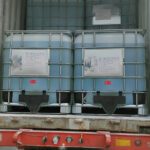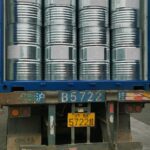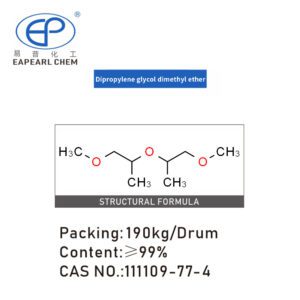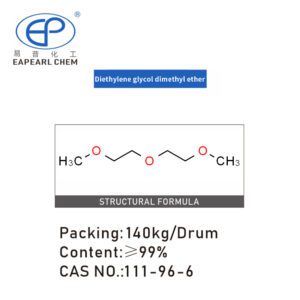THF
Tetrahydrofuran, an organic compound with a heterocyclic structure, possesses the properties of a colorless and transparent liquid, emitting an odor reminiscent of hexyl ether. It demonstrates solubility in various substances such as water, ethanol, ether, acetone, benzene, and other organic solvents. Notably, its vapor has the potential to form explosive mixtures with air and can react vigorously upon contact with acids. Consequently, caution must be exercised due to the risk of combustion in open flames, as it acts as a potent oxidizer. Moreover, interactions with potassium hydroxide and sodium hydroxide also occur.
| Product Name: | Tetrahydrofuran |
|---|---|
| CAS No.: | 109-99-9 |
| Purity | 99.9% |
| Packing: | 180kg/drum |
| HScode: | 2932110000 |
We use the latest network security technology to protect your personal information from leakage, and to ensure that you can shop safely and securely.
Share
Description:
Preparation method:
1. One of the pioneering methods in the industry to produce tetrahydrofuran is through the furfural process, which involves the decarbonylation of furan to obtain furfural and its subsequent hydrogenation. Furfural is primarily derived from corn and other agricultural and sideline products through hydrolysis. However, this method has gradually phased out due to its adverse environmental impact and limited suitability for large-scale production.
2. To catalytically produce tetrahydrofuran from maleic anhydride, a reactor is employed where maleic anhydride, hydrogen, and a nickel catalyst are combined. The ratio of tetrahydrofuran to γ-butyrolactone, the desired product, can be controlled by adjusting the operating parameters. The reaction product and the unreacted hydrogen undergo cooling and separation in a scrubber, where the gaseous components are isolated from the liquid product. The unreacted hydrogen and gaseous products are recycled back to the reactor, while the liquid product undergoes distillation to obtain pure tetrahydrofuran. This process allows for the flexible adjustment of the γ-butyrolactone and tetrahydrofuran ratio within the range of 0 to 5:1, achieving a 100% conversion rate of maleic anhydride and a tetrahydrofuran selectivity of 85% to 95%. The resulting product exhibits a remarkable purity of 99.97%. This process offers advantages such as excellent catalyst performance, simplicity, and low investment requirements.
3. The 1,4-butanediol dehydration cyclization process involves introducing a 22% sulfuric acid aqueous solution weighing 1087 kg into a reactor. Subsequently, 1,4-butanediol is gradually added at a rate of 110 ℃/h at a temperature of 100 ℃ while maintaining the top temperature of the column at 80 °C. This process yields an aqueous solution containing 80% tetrahydrofuran, collected from the top of the queue at approximately 110 kg/h. Once 50 tons of 1,4-butanediol have been added, around 70 kg of the mixture is removed from the reactor. The resulting filtrate is filtered, and the aqueous sulfuric acid solution obtained can be recycled. This process achieves a tetrahydrofuran yield exceeding 99%. Sulfuric acid catalyzes the industrial production of tetrahydrofuran and remains the catalyst of choice in present-day production. Although this technology is well-established and relatively simple, it requires low reaction temperatures and offers high tetrahydrofuran yields. It is important to note that sulfuric acid in this process corrodes equipment and poses environmental pollution risks.
4. The dichlorobenzene method utilizes 1,4-dichlorobutylene as the raw material, which undergoes hydrolysis to produce butylene glycol, followed by catalytic hydrogenation. In the hydrolysis step, 1,4-dichlorobenzene is treated with a sodium hydroxide solution at 110 °C, forming butylene glycol. The sodium chloride is separated through centrifugal separation, and the filtrate undergoes concentration through evaporation and the removal of alkali metal carboxylate in a distillation column. The refined butene diol is then introduced into a reactor, which reacts at a certain pressure and temperature range of 80 to 120 °C. This hydrogenation step converts butylene glycol into butanediol, distilled into a cyclization reactor. Crude tetrahydrofuran is formed at temperatures of 120 to 140 °C in an acidic medium, followed by distillation for dehydration and the removal of high boiling materials to obtain high-purity tetrahydrofuran. This method offers simplicity, operates under mild conditions, achieves high yield, and requires minimal catalyst usage. Additionally, it allows for continuous utilization.
5. The butadiene oxidation method employs butadiene as the primary raw material, which undergoes oxidation to furan and subsequent hydrogenation. This method has already been industrialized abroad.
6. the first sugar aldehyde is the raw material in industrial production. The aldehyde is mixed with steam and fed into a reactor containing a zinc-chromium-manganese metal oxide catalyst (or palladium). Under specific 400-420 °C conditions, the carbonyl group is removed, yielding furan. The furan is then hydrogenated at 80-120 °C using a skeleton nickel catalyst to produce tetrahydrofuran. Producing 1 ton of tetrahydrofuran requires approximately 3 tons of polysaccharide consumption. Multiple production methods exist, including the mature catalytic dehydration ring method utilizing 1,4-butanediol, known as the lei method (Reppe method), where butanediol is derived from acetylene and formaldehyde. Another method is dichlorobenzene, where tetrahydrofuran is produced as a by-product of 1,4-dichlorobenzene derived from chloroprene rubber monomer. In recent years, the catalytic hydrogenation of maleic anhydride using it as the raw material has also gained development and industrial interest.
7. Furfural can be catalyzed by zinc oxide, chromium oxide, and manganese dioxide for decentralization. Additionally, furfural can undergo hydrogenation to produce tetrahydrofuran in the presence of a nickel-aluminum catalyst.
Synonyms:
Characteristics:
| Molecular Formula | C4H8O |
| Molar Mass | 72.11 |
| Density | 0.887 g/mL at 20 °C |
| Melting Point | -108°C |
| Boling Point | 66 °C |
| Flash Point | >230°F |
| Water Solubility | miscible |
| Solubility | water: soluble |
| Vapor Presure | <0.01 mm Hg ( 25 °C) |
| Vapor Density | 2.5 (vs air) |
| Appearance | Liquid |
| Color | <10(APHA) |
| Odor | Ethereal, detectable at 2 to 50 ppm |
| Exposure Limit | TLV-TWA 200 ppm (590 mg/m3) (ACGIH,MSHA, and OSHA); STEL 250 ppm(ACGIH); IDLH 20,000 ppm (NIOSH). |
| Maximum wavelength(λmax) | [‘λ: 245 nm Amax: ≤0.26’, , ‘λ: 275 nm Amax: ≤0.046’, , ‘λ: 315 μm Amax: ≤0.0044’] |
| Merck | 149,211 |
| BRN | 102391 |
| PH | 7-8 (200g/l, H2O, 20℃) |
| Storage Condition | Store at +5°C to +30°C. |
| Stability | Stable. Incompatible with halogens, strong oxidizing agents, strong reducing agents, strong bases, oxygen. May generate explosive peroxides in storage if in contact with air. Highly flammable. Store a |
| Sensitive | Air Sensitive & Hygroscopic |
| Explosive Limit | 1.5-12.4%(V) |
| Refractive Index | n20/D 1.465 |
| Physical and Chemical Properties | Characteristics of colorless transparent liquid, ether odor. boiling point 67 ℃ freezing point -108 ℃ relative density 0.985 refractive index 1.4050 flash point -17 ℃ solubility, ketone, benzene, Ester, ether, hydrocarbon miscible. |
| PSA | 9.23 |
| XLogP3 | 0.7968 |
| Toxicity | LD50 oral (rat) 2880 mg/kg LC50 inhal (rat) 21,000 ppm (3 h) PEL (OSHA) 200 ppm (590 mg/m3) TLV-TWA (ACGIH) 200 ppm (590 mg/m3) STEL (ACGIH) 250 ppm (737 mg/m3) |
| Flammability characteristics | Class IB Flammable Liquid: Fl.P. below 73°F and BP at or above 100°F. |
Use
FAQ:
Q1: What is Tetrahydrofuran (THF)?
A1: Tetrahydrofuran, commonly known as THF, is a versatile colorless liquid organic compound with the chemical formula (CH2)4O. Classified as a cyclic ether, it finds extensive application as a solvent across multiple industries.
Q2: What are the primary uses of Tetrahydrofuran (THF)?
A2: THF plays a vital role as a solvent in various industries, including pharmaceuticals, polymers, resins, adhesives, coatings, and chemical synthesis. Additionally, it serves as a reaction medium for Grignard reagents and a starting material for producing various chemicals.
Q3: What are the physical characteristics of Tetrahydrofuran (THF)?
A3: THF exhibits the properties of a clear, volatile liquid with a distinct ether-like odor. Boiling at approximately 66 degrees Celsius (151 degrees Fahrenheit) and melting at around -108 degrees Celsius (-162 degrees Fahrenheit), it possesses a density of about 0.89 g/mL at 20 degrees Celsius (68 degrees Fahrenheit).
Q4: Is Tetrahydrofuran (THF) flammable?
A4: Indeed, THF is a highly flammable liquid and vapor. With a flash point of approximately -14 degrees Celsius (7 degrees Fahrenheit), it can form explosive mixtures when combined with air. Handling and storing THF requires strict adherence to safety precautions to minimize the risk of fire and explosions.
Q5: How is Tetrahydrofuran (THF) packaged and transported?
A5: Packaging for THF typically involves drums, intermediate bulk containers (IBCs), or iso tanks. It is of utmost importance to ensure secure packaging and proper sealing to prevent any leakage during transportation. Adherence to local regulations and international standards is crucial to guarantee the safety of handling and transport.
Q6: What are the storage requirements for Tetrahydrofuran (THF)?
A6: THF should be stored in a well-ventilated area away from direct sunlight, heat sources, and open flames. It is advisable to keep it in tightly sealed containers, avoiding any contact with air or moisture that could lead to the formation of peroxides. Storage conditions are regularly monitored to maintain product quality and ensure safety.
Q7: What safety precautions should be considered when working with Tetrahydrofuran (THF)?
A7: When handling THF, it is crucial to follow specific safety precautions. Appropriate personal protective equipment (PPE), such as gloves, safety goggles, and protective clothing, should be worn to minimize skin contact and eye exposure. Adequate ventilation in work areas is essential, and activities like smoking, eating, or drinking must be strictly prohibited. Detailed safety guidelines are available in the Material Safety Data Sheet (MSDS) for THF.
Q8: Can Tetrahydrofuran (THF) be used in food or medical applications?
A8: THF should not be used in food or medical applications. Its primary purpose lies in industrial solvent usage, not for direct consumption or medical use. Adherence to proper handling and usage guidelines is vital to prevent adverse effects.
Q9: Where can I purchase Tetrahydrofuran (THF)?
A9: As a chemical manufacturer, our company offers Tetrahydrofuran (THF) for sale. As an inaugural step, it is requisite that you ascertain your possession of the requisite qualifications and conditions enabling the acquisition of chemicals of a hazardous nature. Don’t hesitate to contact our sales department or authorized distributors for inquiries regarding pricing, availability, and specific requirements.
QQ10: Can you provide technical specifications or additional Tetrahydrofuran (THF) information?
A10: Certainly! Our dedicated technical support team can provide detailed technical specifications, including information on purity, moisture content, acidity, and other relevant parameters. We are also equipped to offer guidance on the proper handling, storage, and transportation of THF. Feel free to contact our sales or customer support team with your specific inquiries; we will be more than happy to assist you.
相关产品
Loading Video or Picture:



























